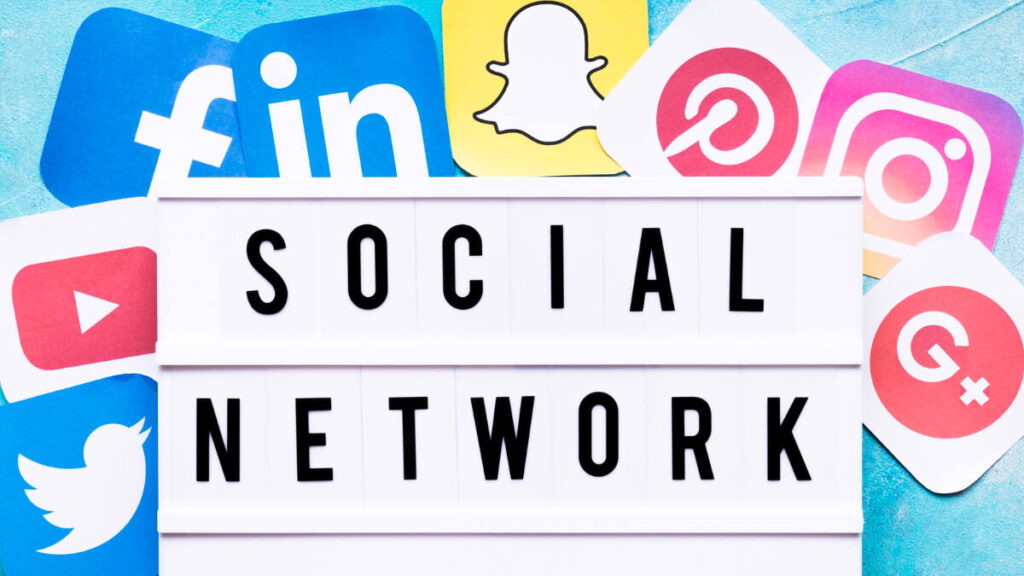Introduction
The social media algorithm is a constantly evolving puzzle for content creators. Changes make it more complex each year, and 2024 is no different. With new shifts in the digital landscape, the social media algorithm is not just a challenge but an opportunity. For content creators, staying informed about these updates is critical to maintaining visibility and engagement. Here, we’ll break down the key updates to the social media algorithm for 2024, why they matter, and how you can leverage them to your advantage.
- Introduction
- Understanding the 2024 Social Media Algorithm Changes
- What 2024's Algorithm Changes Mean for Content Creators
- Why Are Social Media Algorithms Bad? Understanding Criticisms and Concerns
- Social Media Algorithm Examples: How Different Platforms Are Shaping User Experience
- Social Media Algorithm Research: What Studies Reveal About Algorithmic Impact
- Final Thoughts: Navigating the Social Media Algorithm in 2024
Understanding the 2024 Social Media Algorithm Changes
Social media platforms like Facebook, Instagram, TikTok, and LinkedIn rely on algorithms to decide which content users see. The algorithm functions as a content gatekeeper, analyzing countless pieces of data to present users with content they’ll engage with. So, what has changed in 2024? This year’s algorithm updates are designed to favor high-quality content, increased interactivity, and authenticity. Creators who understand these shifts can stand out in a crowded space.
Why Are Algorithms Constantly Changing?
Social media algorithms evolve to meet users’ needs and preferences, and as user behavior changes, so must the algorithms. Platforms now focus on creating healthier online environments, curbing misinformation, and improving user engagement. Understanding these shifts helps you, as a creator, adapt and use the social media algorithm to your benefit.
What 2024’s Algorithm Changes Mean for Content Creators
With the new social media algorithm updates, we’re seeing three major trends:
- Increased Value on Interaction Over Reach
- Prioritization of Authenticity
- Focus on Video Content and Stories
Platforms want creators to engage deeply with their audiences rather than amass views or likes. Let’s dive into these aspects to understand what they mean for you and how to use them strategically.
Step 1: Focus on Interactive Content
One of the biggest takeaways from the 2024 social media algorithm changes is the emphasis on interactive content. But what exactly does interactive content mean? Content invites your audience to comment, share, and engage. Polls, quizzes, and Q&As are prime examples of interactive content that helps trigger positive signals within the social media algorithm.
Example: How Interactive Content Boosted My Reach
Consider this scenario: a small business owner posts regularly on Instagram but sees little engagement. After switching to interactive content—such as polls in Instagram Stories and Q&As—they noticed their content was reaching a larger audience. That’s because the social media algorithm favors posts that drive engagement. Following this approach can help you boost visibility on social media, no matter your niche.
Pro Tip: Try adding a question at the end of each post to encourage comments, like, “What’s your take on this?” or “Share your thoughts below!” This minor adjustment will enable you to establish a stronger relationship with your audience and can occasionally be helpful.
Step 2: Embrace Authenticity in Your Content
Authenticity has become crucial in 2024 as users increasingly seek genuine connections with creators. The social media algorithm now prioritizes authentic content—posts that feel real, personal, and relatable. Think of it this way: Users are more likely to engage with a post showing a behind-the-scenes look at your Day than with polished, high-production content that feels staged.
Real-Life Example: Authentic Content That Resonates
Take a fitness influencer, for example. When they share candid moments of their struggles with fitness, such as a failed attempt at a workout or a low-energy Day, followers respond more positively. These authentic moments create a sense of trust and help build a community. The social media algorithm recognizes this high engagement and is more likely to boost this type of content.
Action Step: Go live occasionally to share your experiences in real time. It could be an informal Q&A, a quick chat about your Day, or a response to current events. Being spontaneous and open with your audience shows authenticity, helping you score high in the social media algorithm.
Step 3: Prioritize Video Content and Stories
The third key to mastering the social media algorithm in 2024 is embracing video content. Platforms like Instagram, TikTok, and YouTube are leaning towards video, with algorithms prioritizing this format over images and text. Stories and short-form videos are particularly powerful as they engage users more effectively.
The Power of Video Content: A Creator’s Journey
Imagine a content creator who used to post only static images. They noticed a substantial boost in views and engagement after switching to short, snappy videos that tell a story or convey a message. That’s because the social media algorithm recognizes video content as more engaging, pushing it to a wider audience.
Action Plan: Don’t hesitate to experiment with different types of video content—short tutorials, daily vlogs, or even repurposing old content into video format. Each platform may prioritize video differently, but in 2024, it’s clear that video is king.
Step 4: Use Relevant Hashtags and Keywords
Hashtags and keywords still matter, but 2024’s social media algorithm has become smarter in evaluating them. This year, it’s not just about volume; it’s about relevance and consistency. Keywords and hashtags allow algorithms to classify your content, so using them strategically can help improve your visibility.
Example of Effective Hashtag Strategy
A travel blogger aiming to increase reach might previously have used broad hashtags like #travel or #wanderlust. However, the 2024 social media algorithm prefers niche and location-specific hashtags. Using hashtags like #HiddenGemsInItaly or #CulturalItaly can help attract a more targeted audience, leading to better engagement and visibility.
Quick Tip: Analyze which hashtags resonate with your audience and choose a few high-impact ones that align closely with your brand.
Step 5: Maintain a Consistent Posting Schedule
Consistency is essential for creators aiming to make the most of the social media algorithm. Posting regularly—daily, every other Day, or weekly—can significantly improve engagement rates. Platforms favor creators who post consistently because it keeps users returning for fresh content.
Success Story: The Power of Consistency
Consider an influencer who committed to posting every day for a month. The results were astonishing. Their engagement levels spiked, and their follower count increased significantly. This isn’t a coincidence; the social media algorithm loves consistency. Users who know they can expect regular updates are more likely to engage with and share your content.
Recommendation: Create a content calendar to keep your posting consistent. Many free tools, such as Trello or Google Calendar, are available online to help you plan posts and stay organized.
Step 6: Monitor Analytics to Understand What Works
Analytics are a goldmine for understanding the social media algorithm and its impact on your content. Regularly monitoring your analytics allows you to identify which types of content resonate with your audience and adjust your strategy accordingly.
Using Analytics to Fine-Tune Your Strategy
A creator who frequently reviews their analytics can spot trends, such as which posts generated the most engagement and which didn’t. By understanding these patterns, you can refine your approach and create more of the content that performs well.
Takeaway: Use tools like Instagram Insights or Google Analytics to track your posts’ performance. Analyzing these insights can provide valuable guidance on what works and doesn’t, helping you improve over time.
Why Are Social Media Algorithms Bad? Understanding Criticisms and Concerns
As much as social media algorithms make content recommendations more personalized, they’ve faced criticism. Algorithms can reinforce echo chambers and lead to content saturation, often prioritizing certain types of posts at the expense of others. Here’s why some people believe social media algorithms can be problematic:
- Selective Content Exposure – By prioritizing content similar to what a user has previously interacted with, the algorithm can reinforce narrow viewpoints and prevent exposure to diverse perspectives.
- Reduced Organic Reach for Creators – The social media algorithm tends to favor paid ads and highly engaging content, which can reduce the organic reach of smaller creators.
- Content Homogenization—Users risk losing unique, authentic perspectives as they begin tailoring content based on what works with the algorithm.
Understanding these criticisms allows creators to navigate and adapt to these algorithms more effectively despite these challenges.
Social Media Algorithm Examples: How Different Platforms Are Shaping User Experience
Each platform has its unique approach to the social media algorithm. Here are some examples of how popular platforms manage content visibility:
- Facebook prioritizes posts from friends and family but incorporates signals from past interactions, pushing highly engaging content to the top.
- Instagram focuses on recent interactions, favoring Reels and Stories for short-form video engagement.
- TikTok uses a For You Page (FYP), which displays content from a broader pool of creators, often prioritizing viral and trending videos.
- LinkedIn prioritizes content from professional networks, and the algorithm favors comments and shares, amplifying posts that spark conversations.
Customizing your strategy to each platform’s distinct algorithm may increase your visibility in 2024. Adapting your content across different algorithms increases your chance of reaching a wider audience.
Social Media Algorithm Research: What Studies Reveal About Algorithmic Impact
Research on social media algorithms has grown significantly as these algorithms impact daily online interactions. Various studies have explored how algorithms affect content consumption patterns and user behavior:
- Engagement-Based Ranking: Research shows that algorithms prioritizing high-engagement posts can lead to content polarization, where only certain types of content (like divisive or sensational posts) thrive.
- Mental Health Impacts: Studies indicate that platforms emphasizing curated content may contribute to anxiety or social comparison among users.
- Algorithm Awareness: Interestingly, studies find that users who understand algorithms are more mindful of their media consumption and often become more discerning about what they interact with.
Understanding these findings helps creators approach their content strategy with an awareness of how audiences may interact with their posts under the influence of these algorithms. Adapting to new social media algorithm changes, especially in 2024, means staying informed on this research and its real-world impact.
Final Thoughts: Navigating the Social Media Algorithm in 2024
The social media algorithm will continue to evolve, challenging creators to stay agile and innovative. In 2024, you can enhance your reach and engagement by understanding the latest trends—interactivity, authenticity, video content, strategic hashtags, consistency, and analytics. Think of the social media algorithm as your partner in reaching the right audience, not just a hurdle to overcome.
Staying proactive and adapting to these changes will help you succeed on social media. Use these strategies to connect with your audience authentically, build a loyal following, and grow your influence confidently.


